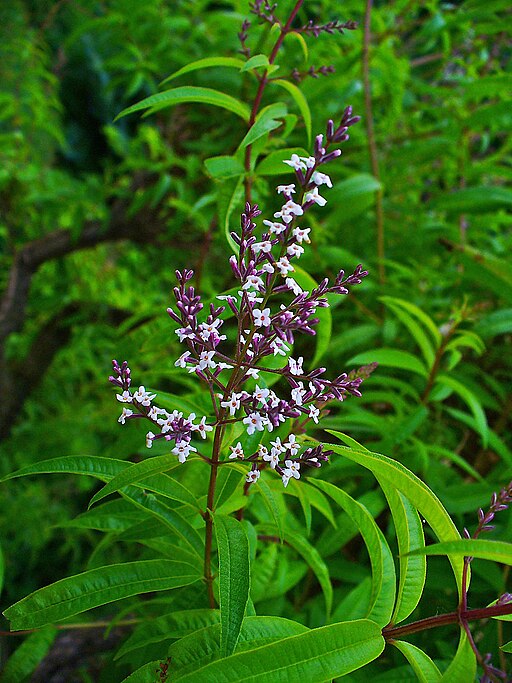- In the Garden
- >
- Gardens
- >
- Gardens R-Z
- >
- Southern Hemisphere Garden
- >
- Aloysia citrodora
Aloysia citrodora
Synonym: Aloysia triphylla
Common name: Lemon verbena, lemon beebrush
Aloysia citrodora, an aromatic, herbaceous shrub belonging to the Verbena family (Verbenaceae), is native to South America, particularly Chile and Argentina. A. citrodora is marketed as a plant for the herb garden, but has many other uses. It is considered to be the truest to lemon of all the lemon-scented plants.
A. citrodora is deciduous in colder climates, but semi-evergreen or evergreen in warmer ones. In late spring tiny white or mauve panicles of four-petaled flowers appear at the ends of branches. The flowers are edible, and sometimes used as a garnish. Lemon verbena leaves grow in groups of three around the stem. The leaves are light green, lance-shaped, and slightly rough to the touch. The surface of the leaves hav prominent veining. Aloysia citrodora leaves emit a strong lemon scent when bruised, and the lemon scent is strongest when the flowers appear.
Lemon verbena was brought to Europe by the Spanish and Portuguese in the 17th century. They wanted the plant for its oil. Lemon verbena is rich in essential oils, and is said to have a calming effect on the body and the mind. The leaves and the flowers are used to add a lemon flavour to tea, other beverages, and desserts, and also to add flavour to meat dishes. It has also been added in potpourri. In Latin American countries A. citrodora was used in traditional medicine. It is thought to have many health benefits.
Lemon verbena is easily propagated by cuttings. It prefers full sun and well-draining, fertile soil. It is best to cut it back so it doesn't get straggly.
The genus name Aloysia was given to honour Princess Maria Luisa of Parma, wife of King Charles IV of Spain. The specific epithet is from Latin and means 'lemon-scented'.
At VanDusen, Aloysia citrodora is planted as a seasonal shrub. It can be found in Bed 57B of the Southern Hemisphere Garden underneath the monkey puzzle tree (Araucaria aracana).
Text and all photos by Kumi Sutcliffe, except for flower photo which is by H. Zell, via Wikimedia Commons






